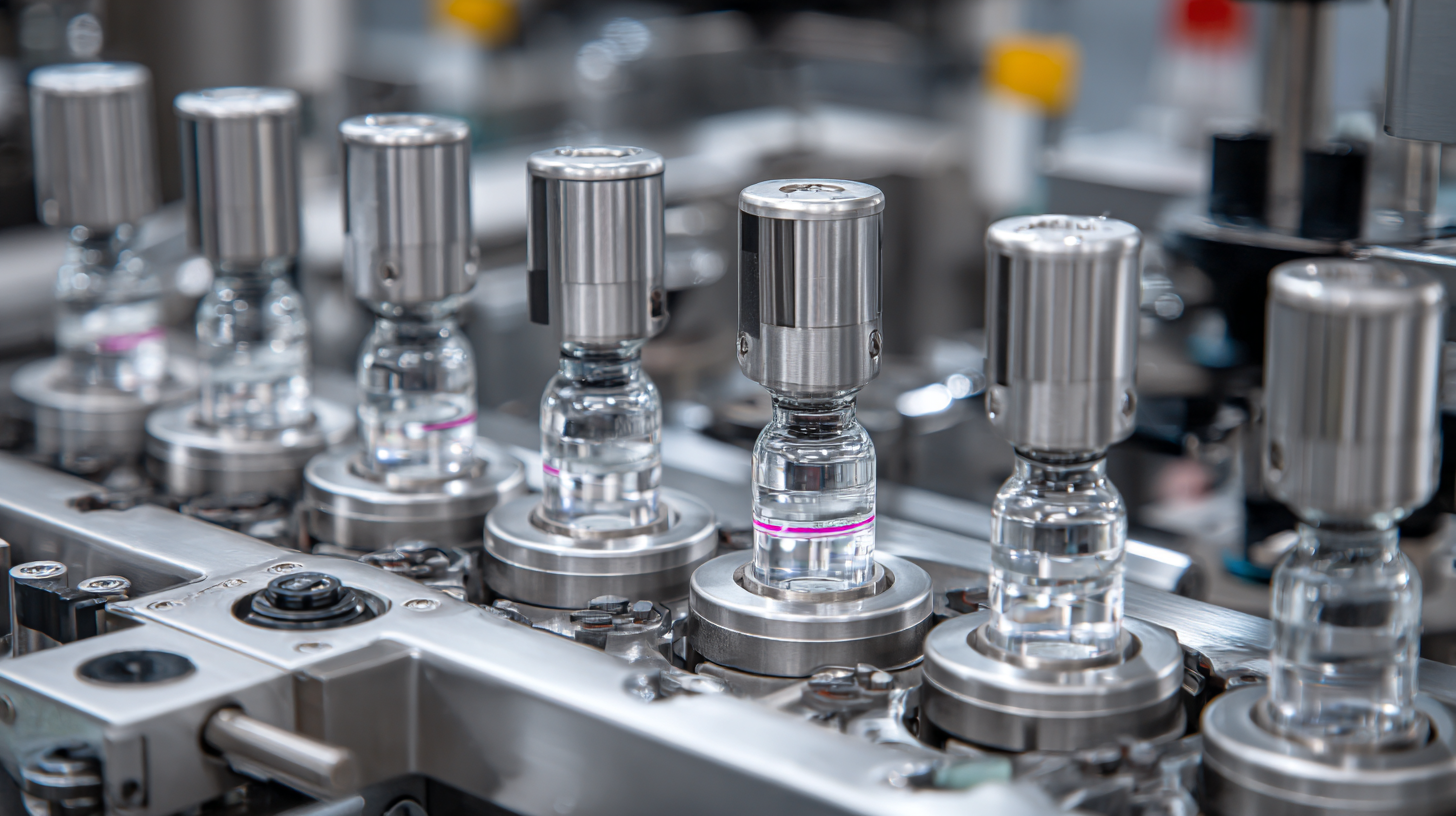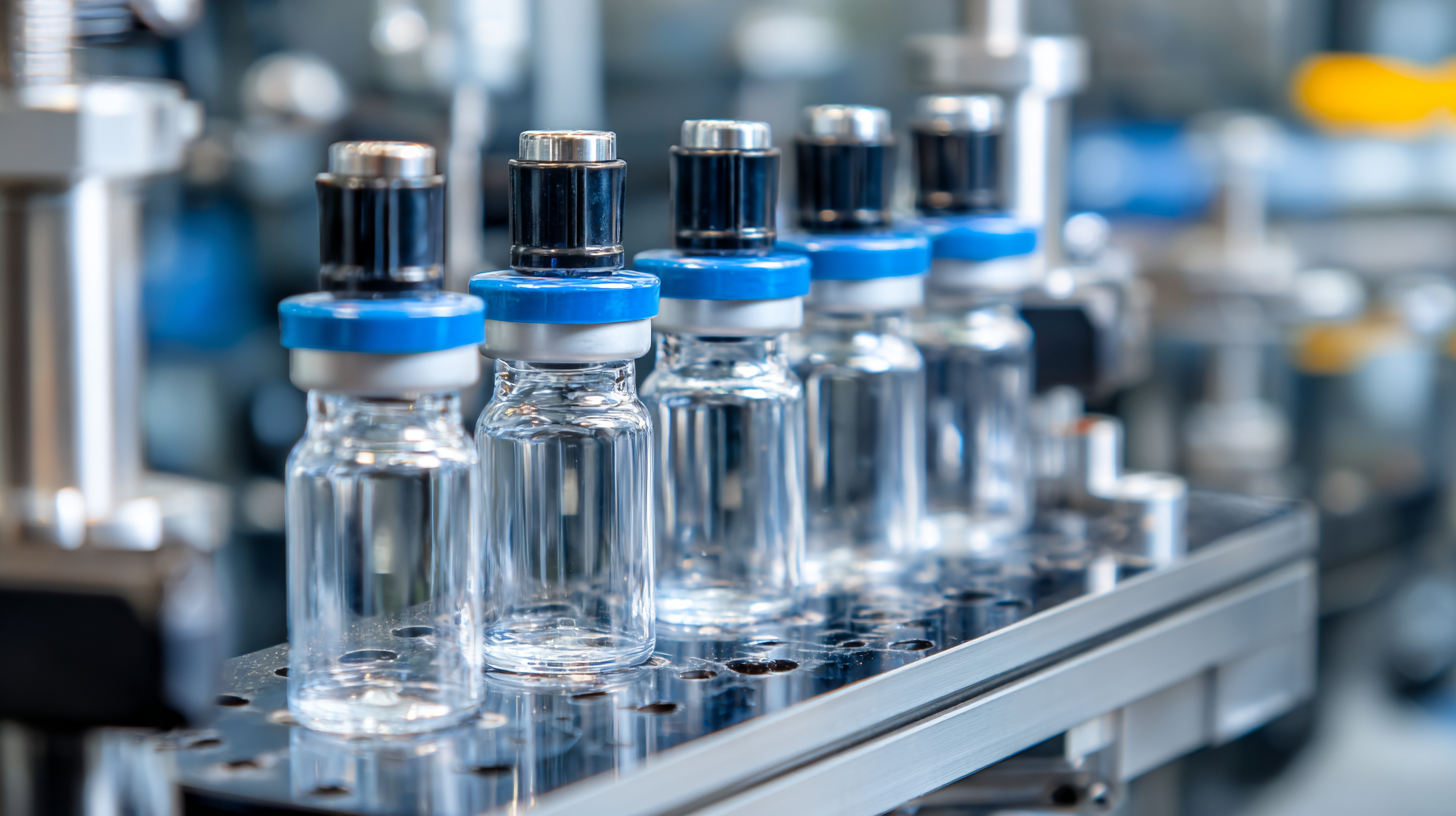Automated Dispensing Robot Videos
A World of Robotic Dispensing and Assembly SolutionsUltimate Guide to Choosing the Best Vial Capping Machine for Your Production Needs
In today's fast-paced manufacturing environment, the precision and efficiency of your production line can significantly impact the quality of your products and your bottom line. One crucial component often overlooked is the Vial Capping Machine, which plays a vital role in ensuring the secure sealing of vials across various industries, from pharmaceuticals to cosmetics. Choosing the right Vial Capping Machine can be a daunting task with the plethora of options available on the market, each boasting unique features and technologies. This ultimate guide aims to simplify the selection process by providing key insights and considerations, helping you understand the critical factors that influence the performance and reliability of vial capping machines. Whether you're a small startup or an established business, making the right choice can enhance productivity, reduce waste, and ensure compliance with industry standards, ultimately leading to greater success in your production endeavors.

Understanding the Importance of Choosing the Right Vial Capping Machine for Pharmaceutical Production
 When it comes to pharmaceutical production, selecting the right vial capping machine is paramount. The process of capping vials not only ensures the integrity of the product but also plays a critical role in maintaining sterility, particularly for lyophilized drug products. The wrong selection can jeopardize the efficacy of the drug, making it essential for manufacturers to choose equipment that meets stringent industry standards.
When it comes to pharmaceutical production, selecting the right vial capping machine is paramount. The process of capping vials not only ensures the integrity of the product but also plays a critical role in maintaining sterility, particularly for lyophilized drug products. The wrong selection can jeopardize the efficacy of the drug, making it essential for manufacturers to choose equipment that meets stringent industry standards.
Aseptic manufacturing requires high-quality capping solutions as companies strive to comply with good manufacturing practices (GMP). A well-designed vial capping machine should facilitate the meticulous cleaning, sterilization, and isolation necessary to produce a sterile environment, minimizing the risk of contamination. The interplay between vial materials—such as glass, rubber stoppers, and crimp caps—and capping technology can significantly impact the overall safety and efficacy of pharmaceutical products, emphasizing the importance of making informed decisions in the selection process.
Key Features to Look for in a Vial Capping Machine: Boosting Efficiency and Quality Control
When selecting a vial capping machine for your production needs, it's essential to prioritize key features that enhance efficiency and quality control.
First and foremost, the machine's speed and output capacity play a critical role in meeting production demands. A high-speed capping machine can significantly reduce bottlenecks, allowing for a smoother workflow.
Furthermore, automation options, such as smart sensors and controls, can enhance precision in the capping process, reducing the risk of product contamination or misalignment.
Quality control is another vital aspect to consider. Machines equipped with integrated inspection systems can ensure each vial is sealed correctly, minimizing the impact of human error. Recent advancements in AI-powered technologies have been crucial in this regard, as they facilitate real-time monitoring and detection of anomalies during production. By implementing these smart solutions, manufacturers can not only boost their efficiency but also ensure that they maintain rigorous quality standards, which is especially important in critical industries such as pharmaceuticals and food production.
Comparative Analysis of Automatic vs. Manual Vial Capping Machines: Pros and Cons
 When deciding between
automatic
and
manual
vial capping machines, it’s essential to weigh the pros and cons of each system.
Automatic vial capping machines
are designed for high production volumes, offering speed and consistency. They can significantly reduce labor costs and minimize human error, making them a solid choice for large-scale operations. However, these machines can require a significant upfront investment and may involve more complex maintenance needs.
When deciding between
automatic
and
manual
vial capping machines, it’s essential to weigh the pros and cons of each system.
Automatic vial capping machines
are designed for high production volumes, offering speed and consistency. They can significantly reduce labor costs and minimize human error, making them a solid choice for large-scale operations. However, these machines can require a significant upfront investment and may involve more complex maintenance needs.
On the other hand,
manual vial capping machines
are typically more affordable and easier to set up. They allow for flexibility in production, making them ideal for smaller batches or varying product lines. While they may not match the speed of automatic machines, they can be sufficient for businesses with lower output demands. Consider also the skill level of your operators, as manual machines may necessitate a trained workforce to ensure consistent sealing.
Tip: Before making a decision, assess your production requirements carefully. If your output is steadily increasing, investing in an automatic machine might save time and headaches in the long run. Conversely, for small-scale operations, a manual capping machine may still meet your needs while optimizing costs. Always look for a balance between your current demands and future growth potential when choosing equipment.
Evaluating Production Capacity Needs: How to Match Capping Machines to Your Output Requirements
When selecting a vial capping machine, understanding your production capacity needs is crucial. The capping machine should align with your output requirements to ensure efficiency across the production line. Evaluate your current and projected production levels, as this will directly influence the type and model of capping machine you should consider. A thorough analysis of your capacity utilization rate can help identify potential gaps and areas for improvement in your production process.
Tip: Start by recording your daily output and the number of vials that need capping. Utilize this data to assess whether your current machinery meets production demands, or if an upgrade is necessary to prevent bottlenecks.
Additionally, consider the production environment. If your facility is aiming for higher efficiency through automation or integrating machine learning techniques into your supply chain management, choose a capping machine compatible with these advancements. This will not only enhance productivity but also streamline inventory control and supplier selection processes.
Tip: Research capping machines that offer flexibility and adaptability for different vial sizes. This versatility can significantly boost your capacity to handle varying production volumes without the need for frequent machinery changes.
Cost-Benefit Analysis: Investing in the Right Vial Capping Machine for Long-Term Savings and Performance
Investing in the right vial capping machine is essential for pharmaceutical manufacturers aiming to balance cost and performance, especially in an industry marked by rapid technological advancements. As the global market for robotic vial washing and filling machines is projected to reach approximately USD 867.56 million by 2034, companies must carefully evaluate their production needs against the backdrop of evolving compliance standards such as EU GMP Annex 1. This guideline prompts manufacturers to consider whether to acquire new equipment or to upgrade existing systems, emphasizing the importance of long-term cost-effectiveness and operational efficiency.
Furthermore, advancements in vial capping technology, including closed-vial systems, have demonstrated significant improvements in aseptic filling processes. These technologies not only enhance the integrity of the final product but also reduce the risk of contamination, thereby ensuring compliance with stringent safety regulations. The continuous improvement in automation and monitoring techniques further supports manufacturers in achieving optimal performance. Therefore, a thorough cost-benefit analysis becomes crucial in selecting the right vial capping machine, enabling companies to maximize their investment while ensuring sustainable production capabilities in an increasingly competitive market.
Ultimate Guide to Choosing the Best Vial Capping Machine for Your Production Needs
| Machine Type | Production Capacity (vials/hour) | Cost ($) | Energy Consumption (kWh) | Maintenance Cost (Annually $) | ROI (Years) |
|---|---|---|---|---|---|
| Semi-Automatic Capping Machine | 500 | 5,000 | 1.5 | 300 | 1.5 |
| Fully Automatic Capping Machine | 2000 | 15,000 | 3 | 500 | 2 |
| Manual Capping Machine | 200 | 1,000 | 0.5 | 150 | 3 |
| Tabletop Capping Machine | 1000 | 8,000 | 2 | 200 | 2.5 |
